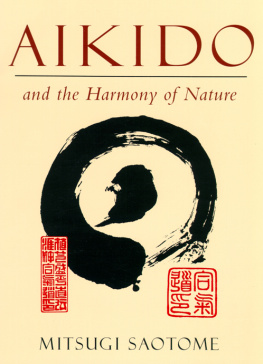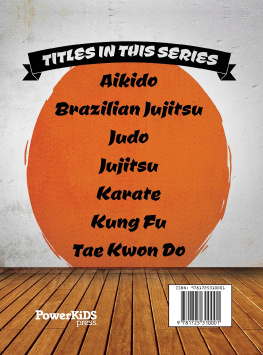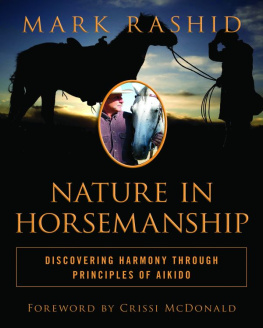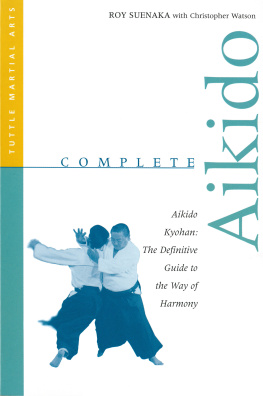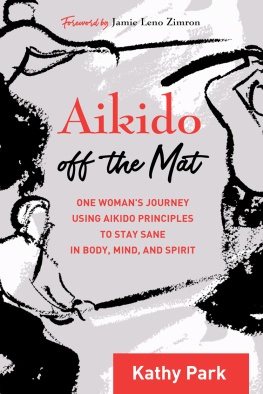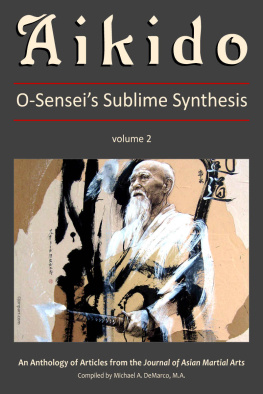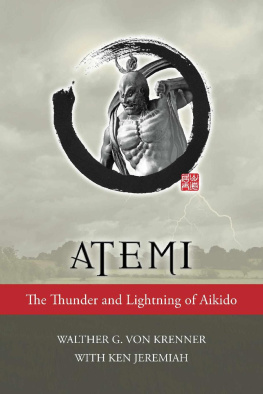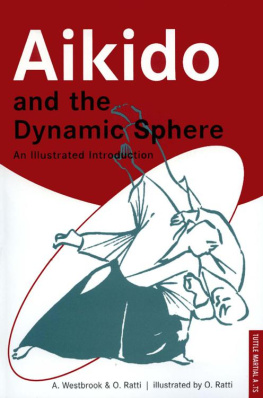Anyone with an interest in Asian culture and philosophy will also find it interesting and entertaining. Over the years I have heard many people ask, What is Aikido? Mitsugi Saotome has provided us with a well-written and thorough answer.
Pacific World
Aikido and the Harmony of Nature reveals the profound philosophical and ethical principles embodied in the art of Aikido and relates those principles to the laws of nature. It is among the clearest, deepest, and most inspiring books ever written on Aikido or, for that matter, on any martial art.
Susan Perry, Editor-in-Chief, Aikido Today magazine
ABOUT THE BOOK
Here is a unique approach to the teachings of the Founder of Aikido, Morihei Ueshiba, as interpreted by his direct student of fifteen years. Mitsugi Saotome examines the spiritual philosophy of the Founder, the warrior ideals of feudal Japan as the basis of his martial arts philosophy, and the scientific principles underlying the philosophy of Aikido technique.
The author shows that the physical movement of Aikido is the embodiment of principles of the spirit. Negative force is not countered with aggression but is controlled and redirected through the power and balance of spiral movement. This is the shape of Aikido and the dynamic shape at the foundation of all energies of existence. Aikido movement can only be understood from its roots in universal law and the processes of nature. The sincere practice and study of Aikido deepens our appreciation for the perfection of natures balance and brings us back into harmony with our environment, other people, and ourselves.
Abundantly illustrated with the authors drawings, diagrams, and calligraphies, as well as photographs demonstrating Aikido techniques, the book also offers a history of Aikido, personal anecdotes about the Founder, and translations of several of his lectures.
MITSUGI SAOTOME Sensei is the founder of the Aikido Schools of Ueshiba and the chief instructor at the Aikido Shobukan Dojo in Washington, D.C. He is also the author of The Principles of Aikido.
Sign up to learn more about our books and receive special offers from Shambhala Publications.

Or visit us online to sign up at shambhala.com/eshambhala.

Aikido To Shizen To No Chowa: Aikido and the Harmony of Nature


SHAMBHALA
Boston & London
2013
Shambhala Publications, Inc.
Horticultural Hall
300 Massachusetts Avenue
Boston, Massachusetts 02115
www.shambhala.com
1986, 1993 by Mitsugi Saotome
All rights reserved.
No part of this book may be reproduced in any form or by any means, electronic or mechanical, including photocopying, recording, or by any information storage and retrieval system, without permission in writing from the publisher.
Library of Congress Cataloging-in-Publication Data
Saotome, Mitsugi.
Aikido and the harmony of nature / Mitsugi Saotome.
p. cm.
eISBN 978-0-8348-2584-0
ISBN 0-87773-855-6 (pbk.)
1. AikidoPhilosophy. I. Title.
GV1114.35.S26 1993 92-56440
796.8154dc20CIP
Contents
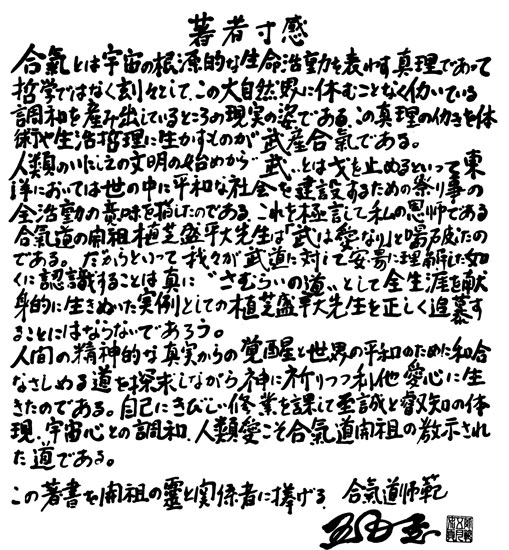
Aikido is not philosophy. Aikido is the true expression and revelation of the ever-evolving functions of the universe. Thus is derived the goal of Takemusu Aikiexperiencing the mechanisms of natures truth in training and applying the theories in our daily life.
In Asia the word Bu means to halt the danger of the thrusting blade. Since the beginnings of human culture, this concept of Bu has implied a global advancement toward the construction of a peaceful society. Bu is love, proclaimed O Sensei, Morihei Ueshiba, the Founder of Aikido and my mentor. Yet no simplistic understanding of Budo can in any way measure the life of unfathomable devotion and dedication O Sensei led in the Way of the true samurai. He strove for a human revelation of spiritual truth, and for world harmony through daily prayer and total unselfish concern for others. We must train hard for the attainment of wisdom, for harmony and an unselfish love for all humankind. Such is the path the Founder of Aikido has cultivated for us to follow.
I dedicate this book to the Founder of Aikido and to all Aikido followers.
SHIHAN M. SAOTOME
Appearing in italics throughout this text are Japanese words and phrases which many readers will encounter for the first time. Often they have no English equivalent. Rather than try to give their literal meaning word for word, which is often misleading, we have tried to give the feeling and philosophy behind the word in the hope of presenting a clearer explanation. Some words will be defined more than once as the book progresses, so please do not accept the first explanation as the fullest. Each chapter builds on the preceding ones.
Most of the book has been written from discussions with Saotome Sensei and from his dictation in English. His usage of the English language, while not gramatically exact, is unique with a fresh and stimulating way of expressing his thoughts. To put some of these expressions into conventional English would make them much less effective. The goal has been to retain as much of his feeling and power as possible. If there are inconsistencies, errors, or misinterpretations, the fault is mine.
The Japanese names of persons born before the Meiji Restoration are written in the traditional Japanese manner, with family name first. Those born after that date, 1868, are written in the Western manner, with the family name last.
The use of the masculine pronoun to refer to both males and females has been avoided as much as possible, but because of the structure of the English language, flow and readability have often dictated its use. There is no such limitation in the Japanese language.
Deepest appreciation to Paul Kang, who freely gave of his time and energy to produce translations from the Japanese of the many difficult, complex ideas and O Senseis speeches, and to Sara Bluestone, who added her professional touch to some of the diagrams and drawings. This book has gone through many changes to evolve to its present form, and many people, too numerous to name here, have helped in all its phases. Thank you all so much. And a special thank-you to Dr. David Jones for his guidance and support.
PATRICIA SAOTOME

Mitsugi Saotome (left) and Doshu Kisshomaru Ueshiba, son of the Founder
I think many people may have difficulty understanding Aikido and the Harmony of Nature. Some will be disappointed because there is so little explanation of the physical education of Aikido self-defense technique. In their search for technical information, these readers may miss the connection to Aikido in the discussion of science and the processes of nature. But the function of Aikido is different. It is not technique in the narrow sense, but the true meaning of the teachings of Morihei Ueshiba, the Founder of Aikido, that I wish to transmit.
Next page
